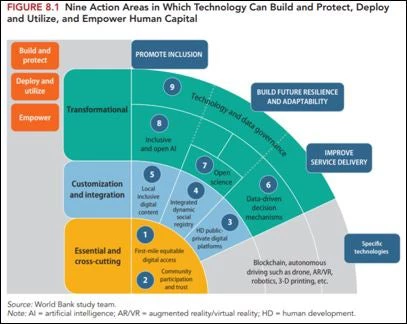Since 2005 Brazil, Russia, India and China (BRICs) have received almost half of all net capital inflows to developing countries. Out of $1,130 billion net capital flows to developing countries in 2010, almost 60 percent went to the BRICs.
Looking at the latest Global Development Finance 2012: External Debt of Developing Countries, which contains detailed stock and flow data on the external debt of 129 developing countries, one can see what drives trends in capital flows to these developing countries and how they compare to the rest of the world.
Aggregate net capital flows to developing countries mask a striking difference between what is happening in the BRICs and what is taking place elsewhere. In 2010, aggregate net capital inflows to the BRICs increased by an average of 75 percent compared to 58 percent for the other 125 developing countries. Net debt inflows to BRICs, $252 billion, were almost two and half times their 2009 level compared to those of other developing countries, which only increased by one and a half times over the same period.
As for equity flows, the disparity is even starker. Net equity inflows to the BRICs ($405 billion in 2010 from $302 billion in 2009) rose three times faster than those to other developing countries ($230 billion in 2010 from $207 billion in 2009).
Figure 1 Net Equity Inflows (in billion USD)
Together the BRICs accounted for almost 40 percent of year-end 2010 external debt stock owed by developing countries, but their external debt burden is much lower. The external liabilities of the BRICs represent on average only 14 percent of GNI and 53 percent of export earnings, and their international reserves are over two and a half times their external debt liabilities. In contrast, other developing countries’ external debt stock is, on average, equivalent to 30 percent of GNI and 85 percent of export earnings, and international reserves cover only 64 percent of external liabilities.
However, even among the BRICs countries there are significant differences in levels of income and indebtedness. Per capita income ranges from $1,463 for India, the poorest of the BRICs to $10,096 for Russia, the richest member of the group. China is the least indebted, measured in terms of GNI and export earnings, 9 percent and 29 percent respectively in 2010, and has international reserves equivalent to 531 percent external debt stocks. Brazil is the most heavily indebted in relation to export earnings, 144 percent.
China is the dominant member within the BRICs. Between 2005-2010 it received half of the net capital flows to the group with the other half divided evenly between the remaining three BRICs. It also received the higher share of net equity flows which, in part, also explains why its external debt burden is the lowest of the four countries. Between 2005 and 2010, 78 percent of net capital flows to China were in the form of equity compared to an average of 61 percent for Brazil, India and Russia.
The DRS database is freely available on the Bank’s Open Data site. The GDF 2012 is a continuation of the World Bank’s publication, Global Development Finance, Volume II (1997 through 2009) and its precursor, World Debt Tables (1973 through 1996).




Join the Conversation